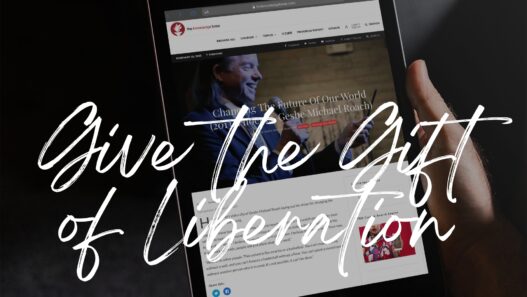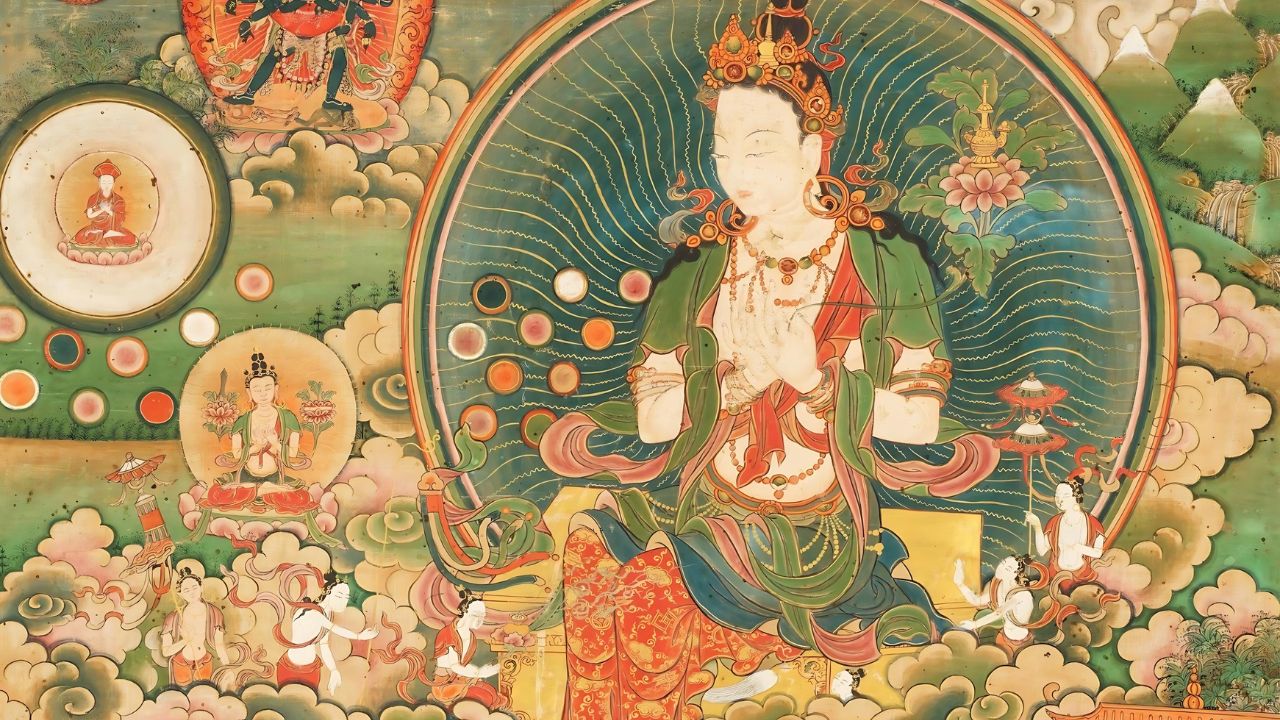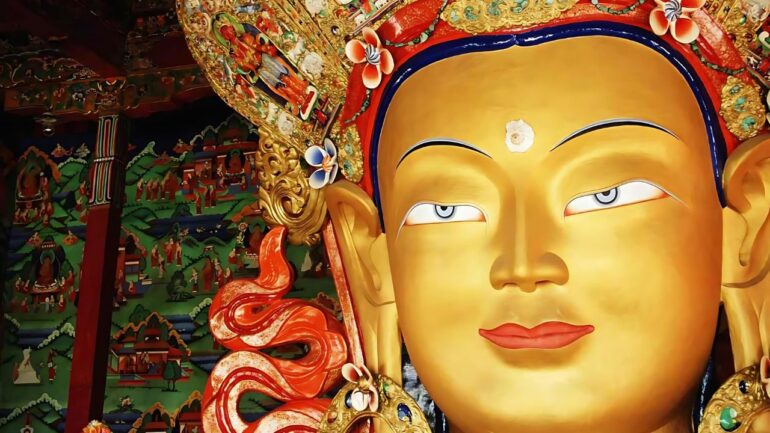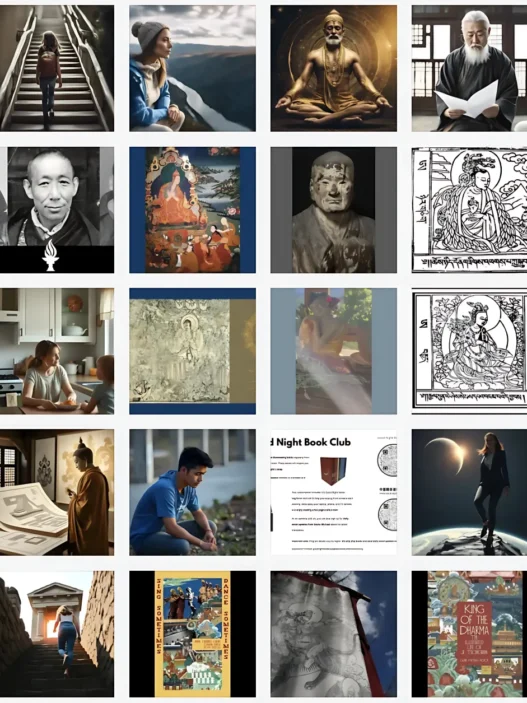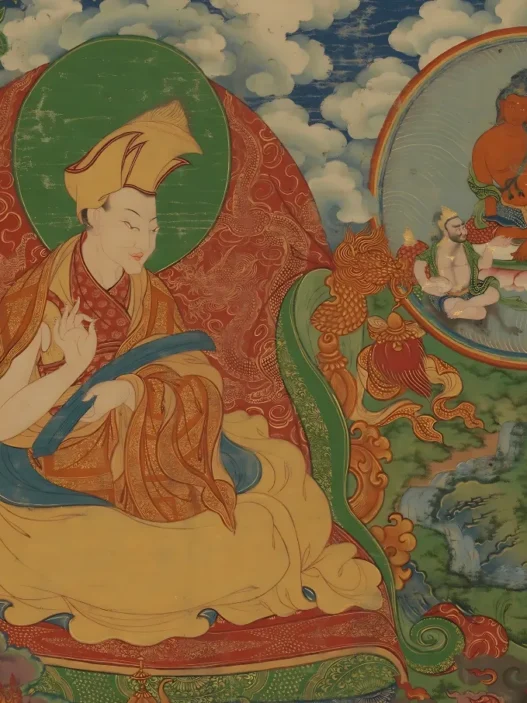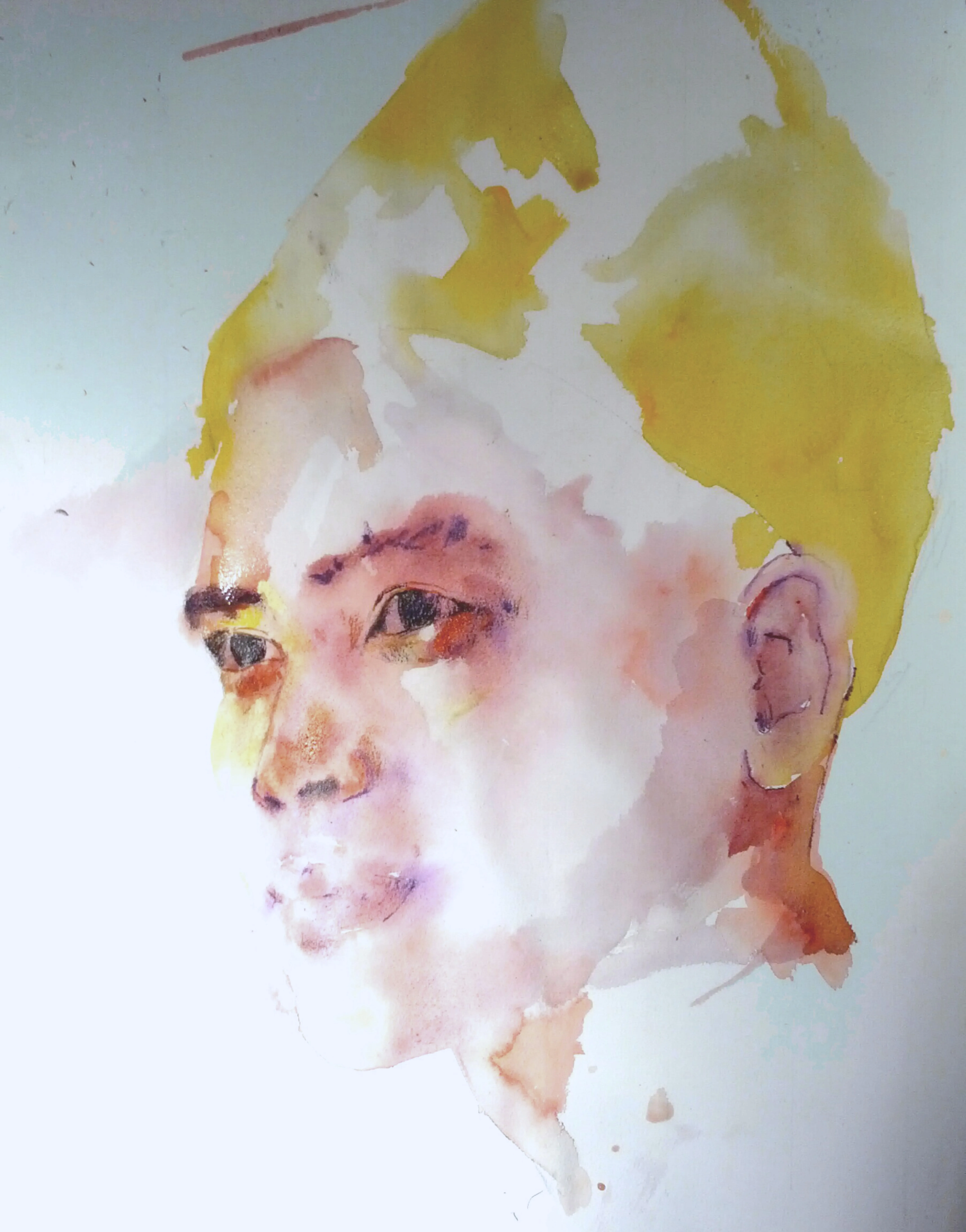In this first course of the ACI In-Depth Course Series, we will study the fifth of the five books of Maitreya, the coming Buddha.
Centuries ago, the Coming Buddha, Lord Maitreya, taught his disciple Arya Asanga the secret of how to reach Enlightenment. He described to him in detail, the inner nature, which guarantees that each of us can, and will, become enlightened. Each of us carries within us a seed, a potential, a capacity to become a fully enlightened being: A Buddha.
The name of the book in English is Commentary on the Latter Part of the Series, in the Greater Way. In Sanskrit this is Mahayana Uttara Tantra Shastra, or Uttara Tantra for short. The “series” here refers to the three progressive turnings of the wheel of the Dharma by Lord Buddha. The “latter part” of the series refers to the second and third turnings of the wheel, which are devoted to the beliefs of the two great schools of the mahayana, or greater way: the Middle-Way and Mind-Only Schools, respectively. The book is a commentary which explains the primary difference between these two schools, which is how they present the idea of emptiness.
This course is meant to give much more detail than the related original ACI course, ACI Course 15: What the Buddha Really Meant (1998, New York, Geshe Michael Roach).
Below you’ll see the audio for the two occasions when this course was taught in its entirety. The first was a small private teacher training at Diamond Mountain University, the second was a large public teaching in Tucson. The teacher training went into a lot more detail than the public teaching. The students who completed the teacher training then went on to help teach some of the classes during the public teaching in Tucson. Interestingly, Geshe Michael began teaching the first class of the teacher training on the very same day he finished his three-year retreat in 2003. It will go down in history as the first teaching given at Diamond Mountain University.
Course Materials
The readings for this course are still incomplete. Readings 1-5 are complete, readings 6 & 10 are included but unfinished. Readings for class 7, 8, & 9 are still untranslated. All of the answer keys with the most important information required to complete all the homework are complete.
Please note: we combined all the course materials into a single PDF file, and to make it even more convenient for you we also bookmarked each section (readings, homework, answer keys, etc.). Please make sure to select that option in your PDF viewer. Should be listed as “bookmarks” or “table of contents”.
Teacher Training Audio
Taught by Geshe Michael to a small group of senior students at Diamond Mountain University in 2003.
Class One: About the Text
Topics include: On the Name of the Text; The Prediction of Arya Asanga; How Arya Asanga was Granted the Text; The Five Books of Maitreya; The Progression of the Five Books; The Six Questions of the King; How High Was the Arya?.
Class Two: The Seven Diamond-Like Visions
Topics include: The Translator Pays Respect; The Seven Diamond-Like Visions; The Two Forms of Each Vision; Why They Are Like a Diamond; On the Number of the Seven; On the Order of the Seven.
Class Three: Becoming a Shelter for the World
Topics include: The Student the Book was Meant For; The Meaning of the Jewel; Taking Shelter in the Buddha; The Qualities of the Coming Buddha; Gyaltsab Je on the Qualities.
Class Four: The Sun of the Holy Dharma
Topics include: Neither Is nor Isn’t; The Way it All Begins; Curing the Sickness; Gaining the Dharma Jewel.
Class Five: Death and Realized Beings
Topics include: How Free is a Realized Being?; The Seven Lifetimes; Realized Beings and the Truth of Suffering; To the Body of Illusion; Death and the Way of Mantra; The Realized Taking Birth Again; How Much Trouble You Avoid by Seeing Emptiness.
Class Six: Nine Images for the Concealed Buddha
Topics include: An Introduction to the Nine Images; The Ugly Lotus; The Bee with Honey; The Essence within a Piece of Grain; The Gold Coin Dropped in a Cesspool; The Treasure Buried in a Poor Man’s Hut; The Sprout within a Small Fruit; The Statue of the Victor within a Ragged Cloth; The World Emperor in the Womb of a Poor Woman; The Golden Statue covered with Mud.
Class Seven: Buddha-Nature is Emptiness
Topics include: The Sources; A Definitive Explanation of Buddha-Nature; Some Debates about Buddha-Nature; The Five Wisdoms and the Five Heaps.
Class Eight: Other Schools on Buddha-Nature
Topics include: Positions of the Ancient Indian Schools; Some Debates on the Indian Schools; Teachings on the Idea of “Other-Emptiness” (Shentong); Some Practical Meditations of the “Other-Emptiness” School; Discussions on Buddha-Nature from His Holiness the Third Karmapa; Gyaltsab Je’s Critique of Other-Emptiness.
Class Nine: In the End, All Paths are One
Topics include: About the Names “Vehicle,” “Listener,” and “Self-Made Buddha”; Kinds of Self-Made Buddhas; The Three Tracks and the Three Scopes; Who Holds the Three Tracks; The Three Degrees of Selflessness; In the End, the Ways are Three; In the End, the Ways are One; Where the Higher Path is Entered; Is There a Beginning or an End to Suffering?; How the Buddhas Awaken Them.
Class Ten: The Twelve Deeds of the Buddha
Topics include: Introduction to the Twelve Deeds; Some Detail on the Twelve Deeds, and the Person who Performs Them; Who Was He Before?; Who Performs the Deeds?; The Tantric View; Celebrating the Deeds; The Whole Story; Declaring Yourself to the World.
Public Teaching Audio (Geshe Michael Roach)
The following are the classes (2, 4, 5, and 7) which were taught by Geshe Michael Roach at the public teaching in Tucson, Arizona in 2003.
Class Two: The Seven Diamond-Like Visions
Topics include: The Translator Pays Respect; The Seven Diamond-Like Visions; The Two Forms of Each Vision; Why They Are Like a Diamond; On the Number of the Seven; On the Order of the Seven.
Class Four: The Sun of the Holy Dharma
Topics include: Neither Is nor Isn’t; The Way it All Begins; Curing the Sickness; Gaining the Dharma Jewel.
Class Five: Death and Realized Beings
Topics include: How Free is a Realized Being?; The Seven Lifetimes; Realized Beings and the Truth of Suffering; To the Body of Illusion; Death and the Way of Mantra; The Realized Taking Birth Again; How Much Trouble You Avoid by Seeing Emptiness.
Class Seven: Buddha-Nature is Emptiness
Topics include: The Sources; A Definitive Explanation of Buddha-Nature; Some Debates about Buddha-Nature; The Five Wisdoms and the Five Heaps.
Public Teaching Audio (Other Teachers)
The following are the classes which were taught by other teachers.
Class One: About the Text (Taught by Rebecca Vinacour)
Topics include: On the Name of the Text; The Prediction of Arya Asanga; How Arya Asanga was Granted the Text; The Five Books of Maitreya; The Progression of the Five Books; The Six Questions of the King; How High Was the Arya?.
Class Three: Becoming a Shelter for the World (Taught by Lama Christie McNally)
Topics include: The Student the Book was Meant For; The Meaning of the Jewel; Taking Shelter in the Buddha; The Qualities of the Coming Buddha; Gyaltsab Je on the Qualities.
Class Six: Nine Images for the Concealed Buddha (Taught by Venerable Lobsang Chukyi)
Topics include: An Introduction to the Nine Images; The Ugly Lotus; The Bee with Honey; The Essence within a Piece of Grain; The Gold Coin Dropped in a Cesspool; The Treasure Buried in a Poor Man’s Hut; The Sprout within a Small Fruit; The Statue of the Victor within a Ragged Cloth; The World Emperor in the Womb of a Poor Woman; The Golden Statue covered with Mud.
Class Eight: Other Schools on Buddha-Nature (Taught by John Roadhouse & Winston McCullough)
Topics include: Positions of the Ancient Indian Schools; Some Debates on the Indian Schools; Teachings on the Idea of “Other-Emptiness” (Shentong); Some Practical Meditations of the “Other-Emptiness” School; Discussions on Buddha-Nature from His Holiness the Third Karmapa; Gyaltsab Je’s Critique of Other-Emptiness.
Class Nine: In the End, All Paths are One (Taught by Winston McCullough)
Topics include: About the Names “Vehicle,” “Listener,” and “Self-Made Buddha”; Kinds of Self-Made Buddhas; The Three Tracks and the Three Scopes; Who Holds the Three Tracks; The Three Degrees of Selflessness; In the End, the Ways are Three; In the End, the Ways are One; Where the Higher Path is Entered; Is There a Beginning or an End to Suffering?; How the Buddhas Awaken Them.
Class Ten: The Twelve Deeds of the Buddha (Taught by Lama Sumati Marut)
Topics include: Introduction to the Twelve Deeds; Some Detail on the Twelve Deeds, and the Person who Performs Them; Who Was He Before?; Who Performs the Deeds?; The Tantric View; Celebrating the Deeds; The Whole Story; Declaring Yourself to the World.










